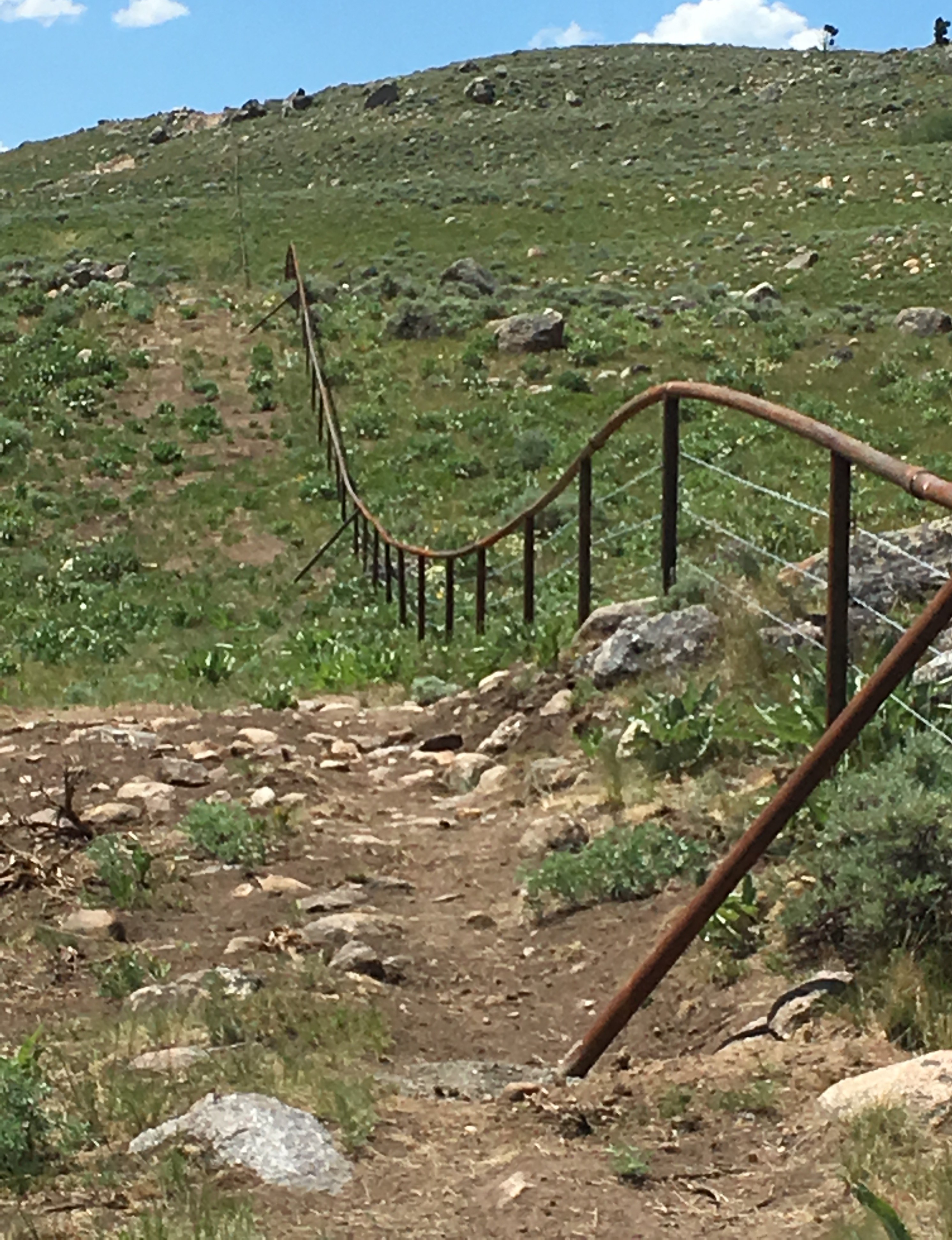A pipe fence is a long-lasting investment for wildlife that ensures crucial habitat is protected from livestock grazing pressure but still allows wildlife to easily pass through. A wildlife-friendly fence design has been shown to greatly reduce stress on wildlife, one of the keys for surviving in Wyoming’s harsh environments.
 A pipe fence has a pole top, which makes it less likely for ungulates, like mule deer and elk, to get caught in the fence when crossing. Also, the top rail makes the fence more visible to sage grouse, reducing bird strikes. The design of a pipe fence allows animals to jump over and crawl under easily without injury, thus reducing the opportunity to get caught up as well as lessening stress on wintering animals. Game and Fish biologists use pipe fences as one of the tools to enhance migration corridors.
A pipe fence has a pole top, which makes it less likely for ungulates, like mule deer and elk, to get caught in the fence when crossing. Also, the top rail makes the fence more visible to sage grouse, reducing bird strikes. The design of a pipe fence allows animals to jump over and crawl under easily without injury, thus reducing the opportunity to get caught up as well as lessening stress on wintering animals. Game and Fish biologists use pipe fences as one of the tools to enhance migration corridors.
This style of fence is also used in places where Game and Fish wants to mitigate damage and disease transmission between wildlife and livestock. It also protects areas where native plants are important for wildlife.
Pipe fences are built to the same standards as pole-top fences, but are sturdier. While the up-front cost of a pipe fence is higher, material costs are often off-set from miles of pipe donated from local energy companies. They can withstand falling trees, wildfires, grazing pressure and thousands of animal crossings. Pipe fences can last more than 100 years. With little maintenance needed, sportsperson dollars can flow to other wildlife projects.
This style of fence is also used in places where Game and Fish wants to mitigate damage and disease transmission between wildlife and livestock. It also protects areas where native plants are important for wildlife.
Pipe fences are built to the same standards as pole-top fences, but are sturdier. While the up-front cost of a pipe fence is higher, material costs are often off-set from miles of pipe donated from local energy companies. They can withstand falling trees, wildfires, grazing pressure and thousands of animal crossings. Pipe fences can last more than 100 years. With little maintenance needed, sportsperson dollars can flow to other wildlife projects.
Publish Date
Answered By
Kyle Berg
Job Title
Pinedale habitat and access biologist
Photo
Ask Game ID
246
Node order
64
Parent Node
1135
